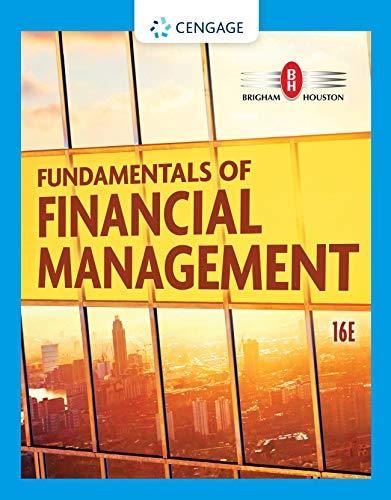In this chapters opening vignette, we discussed Apples decision to establish a dividend payout policy in 2012
Question:
In this chapter’s opening vignette, we discussed Apple’s decision to establish a dividend payout policy in 2012 and the establishment of a share repurchase program that has returned $200 billion to shareholders.
Let’s find out what has happened to Apple’s (AAPL) dividend policy since the time of its original announcement. We can address this issue by relying on data provided on Internet financial websites such as Yahoo! Finance, Morningstar.com, and MSN Money (msn.com/en-us/money/markets). You will have to use a combination of these sites to answer these questions.
Questions
1. What has happened to Apple’s dividend per share, dividend yield, and dividend payout over the past 4 years? Provide an explanation for what took place.
2. Manually plot earnings per share, dividends per share, and cash flow per share over time. In the text, we point out that dividends are often more stable than earnings, that cash flows track earnings very closely, and that cash flow per share exceeds dividends per share by a safe margin. Do you see a similar pattern for Apple?
Explain. (Note that Morningstar.com provides cash flow information for a 10-year period. Just go to the Quote tab, select Key Ratios, and then select Full Key Ratios Data.)
3. Identify the ex-dividend date, the holder-of-record date, and the dividend payment date. From the ex-dividend date and industry convention, you should be able to determine the holder-of-record date. Explain the significance of those dates. Now, go to the interactive price chart on the website. Can you observe price shifts around these dates? Explain what price shifts you might expect to see.
4. Investors are more concerned with future dividends than historical dividends. Look at analysts’ earnings estimates for the next year and the 5-year annual growth estimates. On the basis of these data, what would you expect Apple’s payout policy to be over the next 5 years? (Your answer will only be a guess based on current data.)
5. Review the firm’s annual cash flow statements. Has Apple been repurchasing stock, or has it been issuing new stock?
6. What has happened to its year-end market capitalization over this 4-year period? (To calculate the firm’s market capitalization, you will need to multiply the adjusted closing price at its fiscal year-end (September 30th)
by the number of weighted average shares outstanding. You will have to go to the firm’s website to find its annual 10-K filings for the number of shares outstanding in prior years.)
Step by Step Answer:

Fundamentals Of Financial Management
ISBN: 9780357517574
16th Edition
Authors: Eugene F. Brigham, Joel F. Houston





